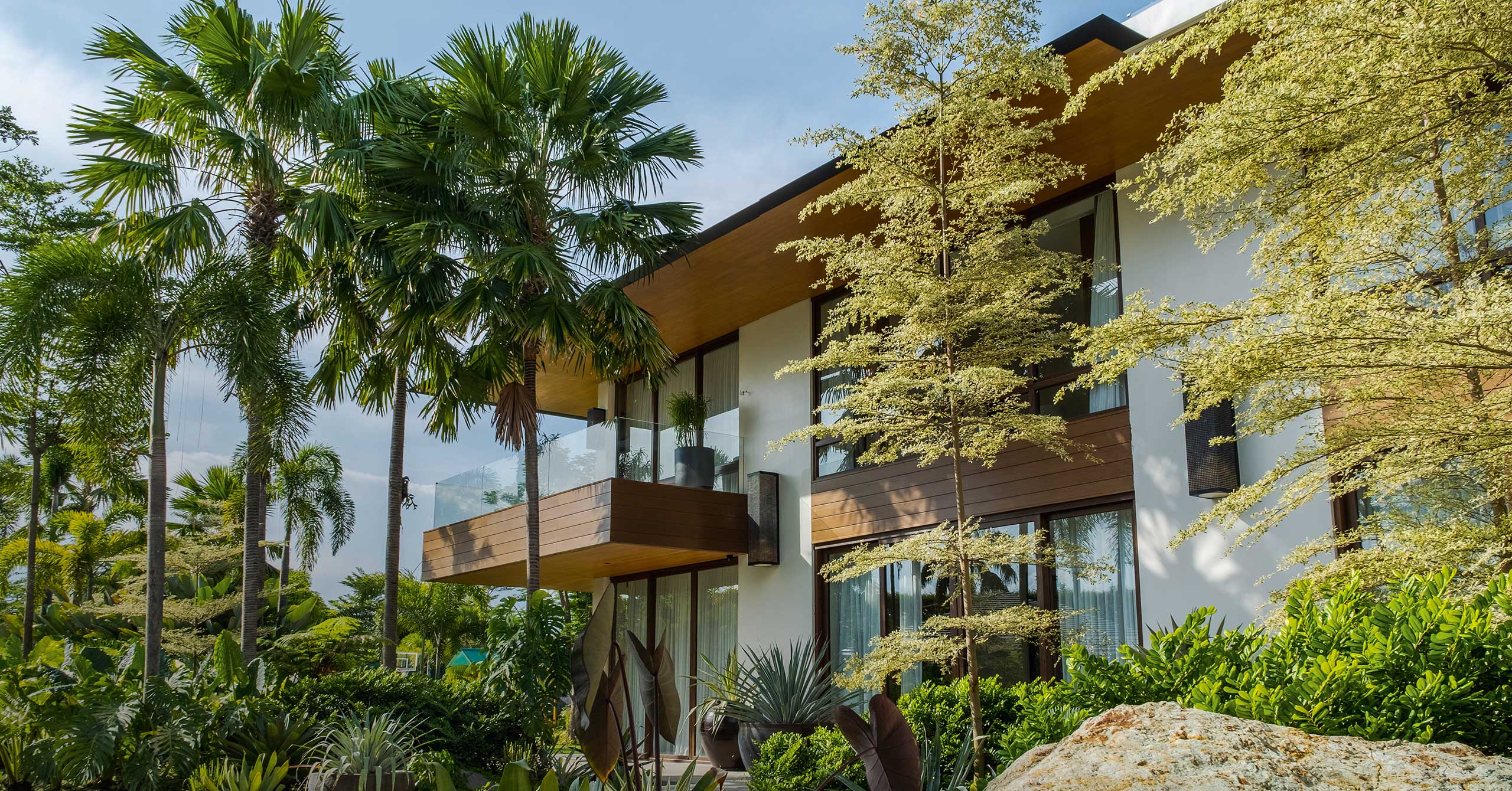This Northern home is a reflection of Pineda’s love for Modern Filipino architectural style.
There’s a pair of paintings in the foyer of the house that sums up, in a tongue-in-cheek way, the personalities of the couple who live there: one depicts a king and a yellow Lamborghini, the other shows a queen, with an Hermes Birkin. The house itself is a celebration of a successful marriage: the couple were college sweethearts who stayed together throughout a long-distance stretch before settling together in Tarlac where they are both from and where they built a flourishing fueling station business in their area, one that has allowed them to enjoy their 30s in the ease and relaxation of a Royal Pineda-designed oasis.
Their residence, ostensibly in the center of busy downtown Tarlac City, feels as secluded as a private island. Yet, what they’ve crafted goes beyond mere isolation but a feat of integrated living. Just a short walk from their expansive, light-filled home are their offices and warehouse, their two worlds encompassed in one property spanning over a hectare in size.
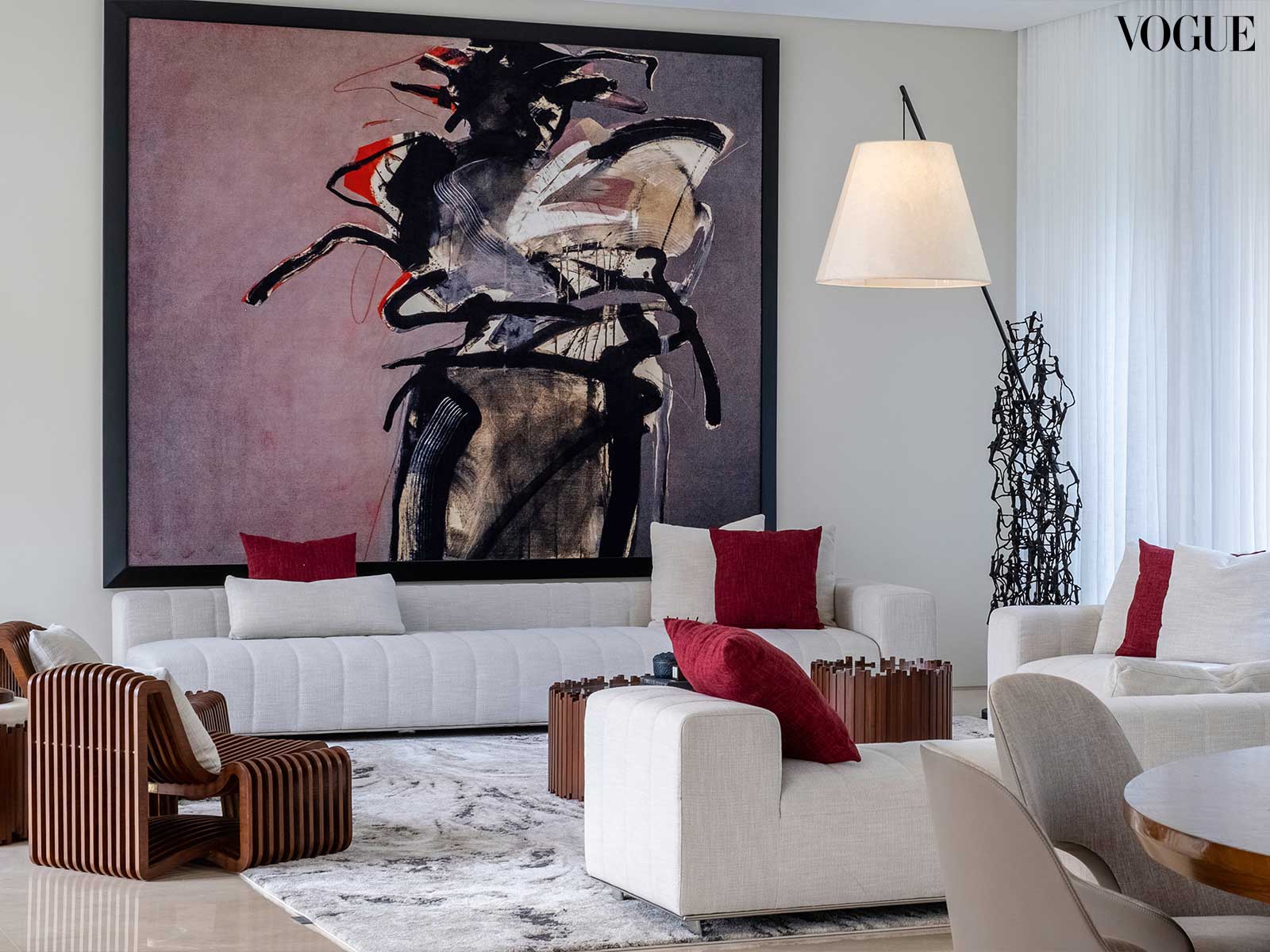
Unlike most builds where the landscaping comes as the finishing touch, with this project the garden came first. The husband, a garden enthusiast, tapped renowned landscape artist Ponce Veridiano to create the lush grounds first, working with existing large trees that grew on the property. By bringing in a variety of full-grown plants, the couple didn’t have to wait for their green paradise to sprout, instead quickly taking shape to provide shade, privacy, and a framework for the structure that was to come.
“Before we came on board, the couple already knew that they really wanted a garden, and a house that co-existed with the garden,” says Pineda, who heads Royal Pineda + Architecture and Design. Knowing how important the garden was to the owners—the husband did much of the earth-moving himself with his own trucks—the architects made it part of the DNA of the house. As sprawling as the house may be, every room looks out, through floor-to-ceiling windows, at the verdant foliage, giving its residents a sense of enclosure and serenity.
“The couple already knew that they really wanted a garden, and a house that co-existed with the garden.”
Pineda stands as an ardent proponent of Modern Filipino architecture, a style that blends traditional elements with contemporary aesthetics. This approach prioritizes climate-responsiveness, emphasizing natural ventilation and lighting to suit the tropical environment. Many Modern Filipino homes embrace clean lines and modernist sensibilities that are adapted to local environment. Pineda’s firm has left its mark on significant public structures as well, with a portfolio that includes the New Clark City athletic center and the Clark International Airport, the latter earning recognition as one of the world’s most beautiful airports. These projects showcase the firm’s ability to apply Modern Filipino design principles on a grand scale, developing spaces that are both functional and culturally resonant.
Closely collaborating with the owners, Pineda says this project was not a case where the architect and designers were hired to do everything and turn over a finished product. “Architecturally, we wanted to give them good bones, good proportions and the passive cooling and permeable architecture. But they were very clear about what they wanted, and we also wanted them to own it.”
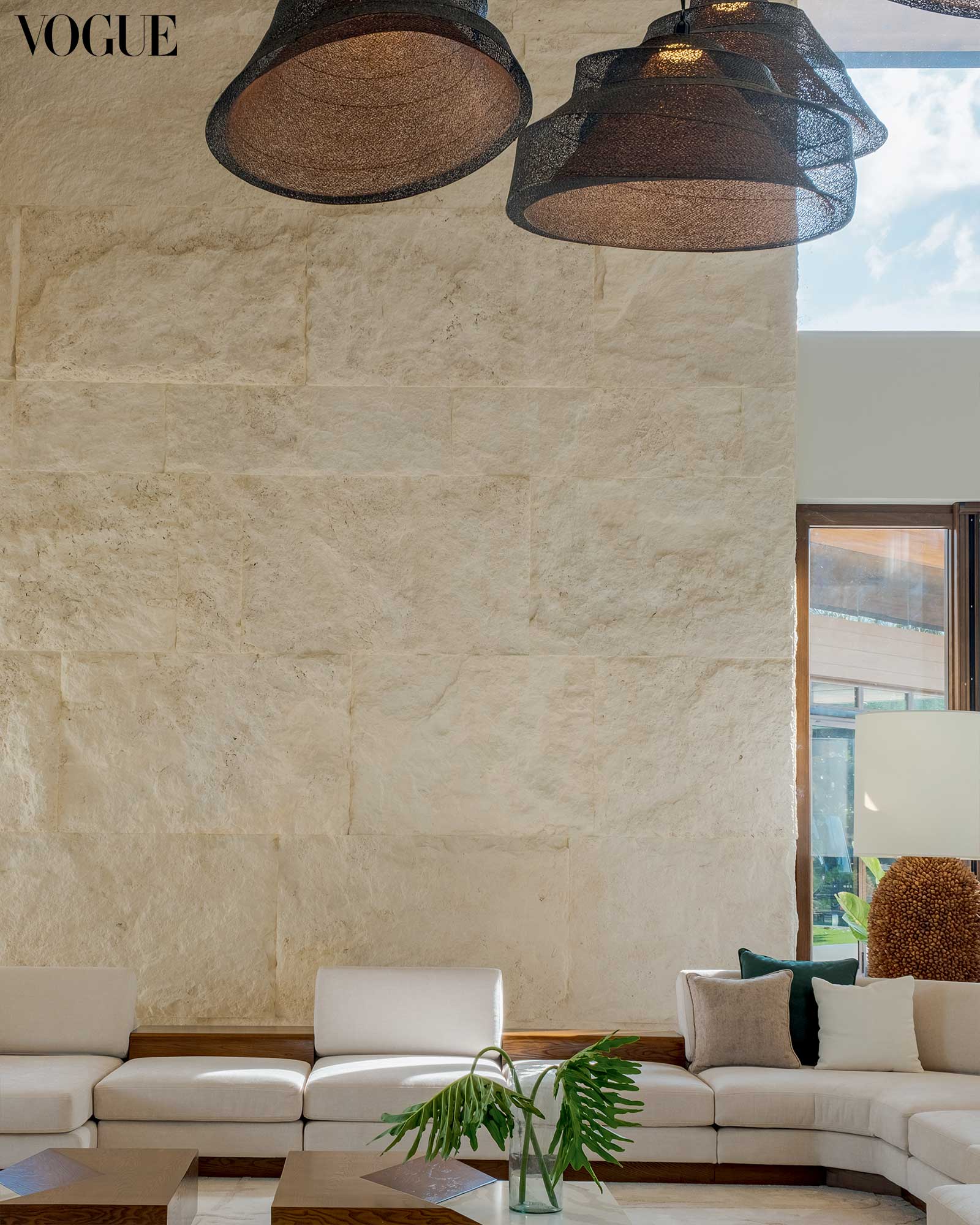
Much like the paintings that were inspired by the owners’ distinct interests, the house is thoughtfully divided into distinct his-and-her zones, each designed to reflect the unique passions and personalities of its occupants. The husband’s domain begins with a glass-enclosed car showroom where his collection of luxury sports cars and high-performance motorcycles are parked on display. Adjacent to this automotive sanctuary lies the quintessential mancave, complete with a billiards table, a fully stocked bar, and a red origami sculpture by Jinggoy Buensuceso commanding attention on the wall. The multifaceted space pays homage to the gentleman’s diverse interests which range from shooting, mountain biking, and gaming.
“Whenever they have bigger events, the carport becomes an open space. They can move out their cars and that translates into an entertainment pavilion,” says Pineda. The flexibility of the two villas removed the need for constructing another pavilion solely for events. “We didn’t want it to feel like a clubhouse. We wanted to have more space for the gardens.”
“Architecturally, we wanted to give them good bones, good proportions.”
A short pathway along a koi pond guides visitors to the heart of the estate, an L-shaped pavilion that serves as the main house. At the far end, one discovers the wife’s personal entertaining haven, a cozy nook perfect for intimate gatherings featuring a plush sitting area and a dining alcove lit by Kenneth Cobonpue’s acrobatic Limbo chandelier, one that is matched in the mancave. Here, a wall of china cabinets house her collection of Hermes tableware. Flanked by a pocket garden on one side and the main garden on the other, this corner of the home extends towards the poolside pavilion, a multipurpose structure that can be used for spa activities and rejuvenating yoga sessions.
The central part of the main villa was designed for the couple’s substantial entertaining needs. A spacious receiving area is appointed with white Italian furniture, their clean lines and modern silhouettes providing a neutral canvas that allows the surrounding greenery to take center stage. Balanced by locally made furniture and decorative pieces, each tell a story of Philippine craftsmanship, from Contemporaneo’s stools made from surplus mahogany wood end cuts, to Vito Selma’s geometric coffee tables, Jude Tiotuico’s industrial-organic steel furnishings and Ronald Castrillo’s metal fishing sculptures.
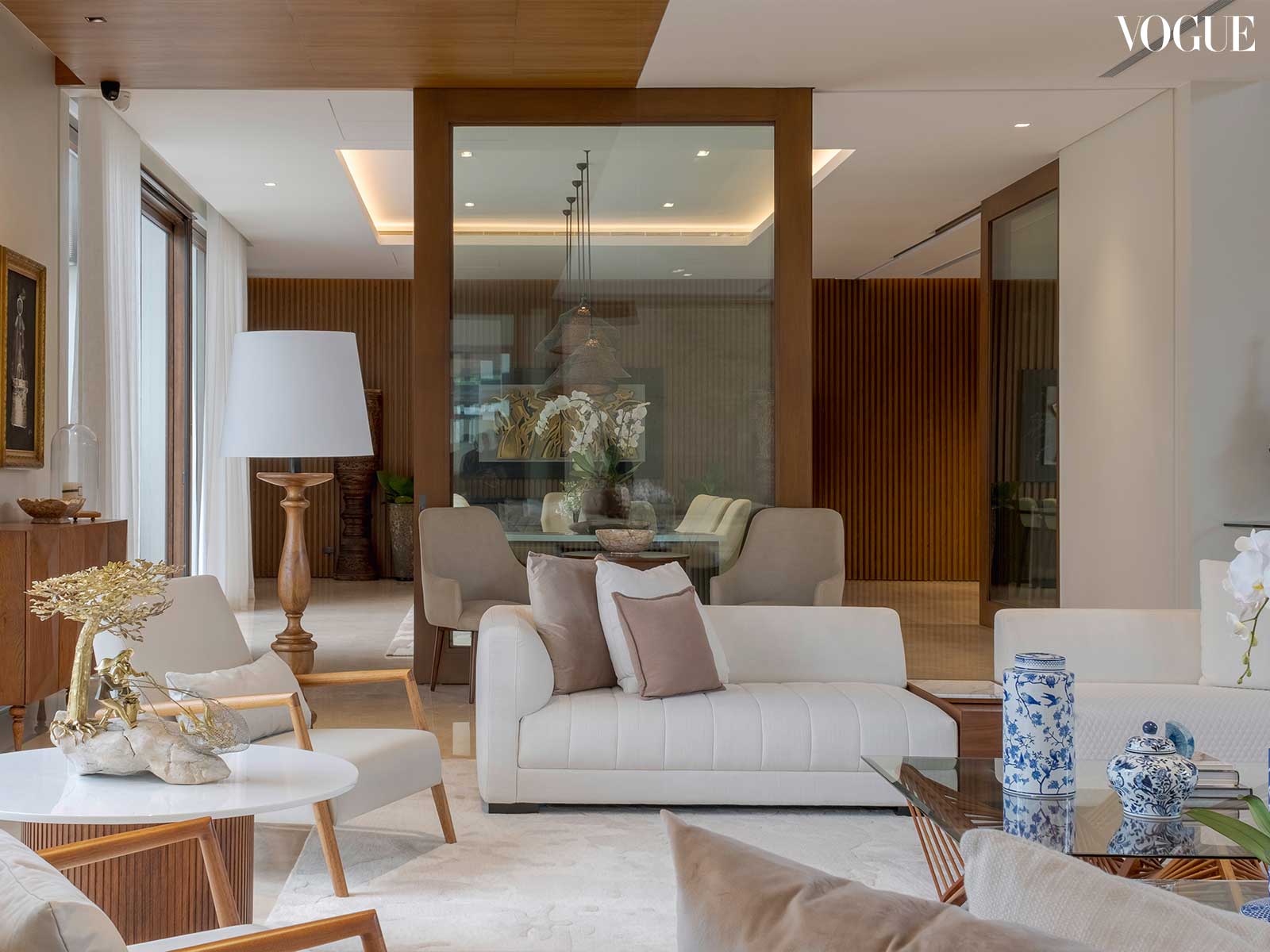
From this central hub, the villa unfolds in two directions. To one side, a main living area beckons, its focal point a dramatic high wall clad in thick Italian stone slabs. In the opposite wing, the formal dining room is anchored by Kenneth Cobonpue’s wave table and illuminated by bespoke metal wire chandeliers by Miguel Aguas, crafted in the neighboring province of Pampanga.
The challenge for the architects, given the space requirements, was how to inject dynamism to massive surface areas. They achieved this by creating a staircase that appears to move and float as it connects the two floors. The ceiling was cladded with contrasting textures, adding depth and visual interest overhead. Finally, by designing permeable spaces and using large windows, they brought the outdoors indoors, creating a seamless, unified space that could also adapt to different needs.
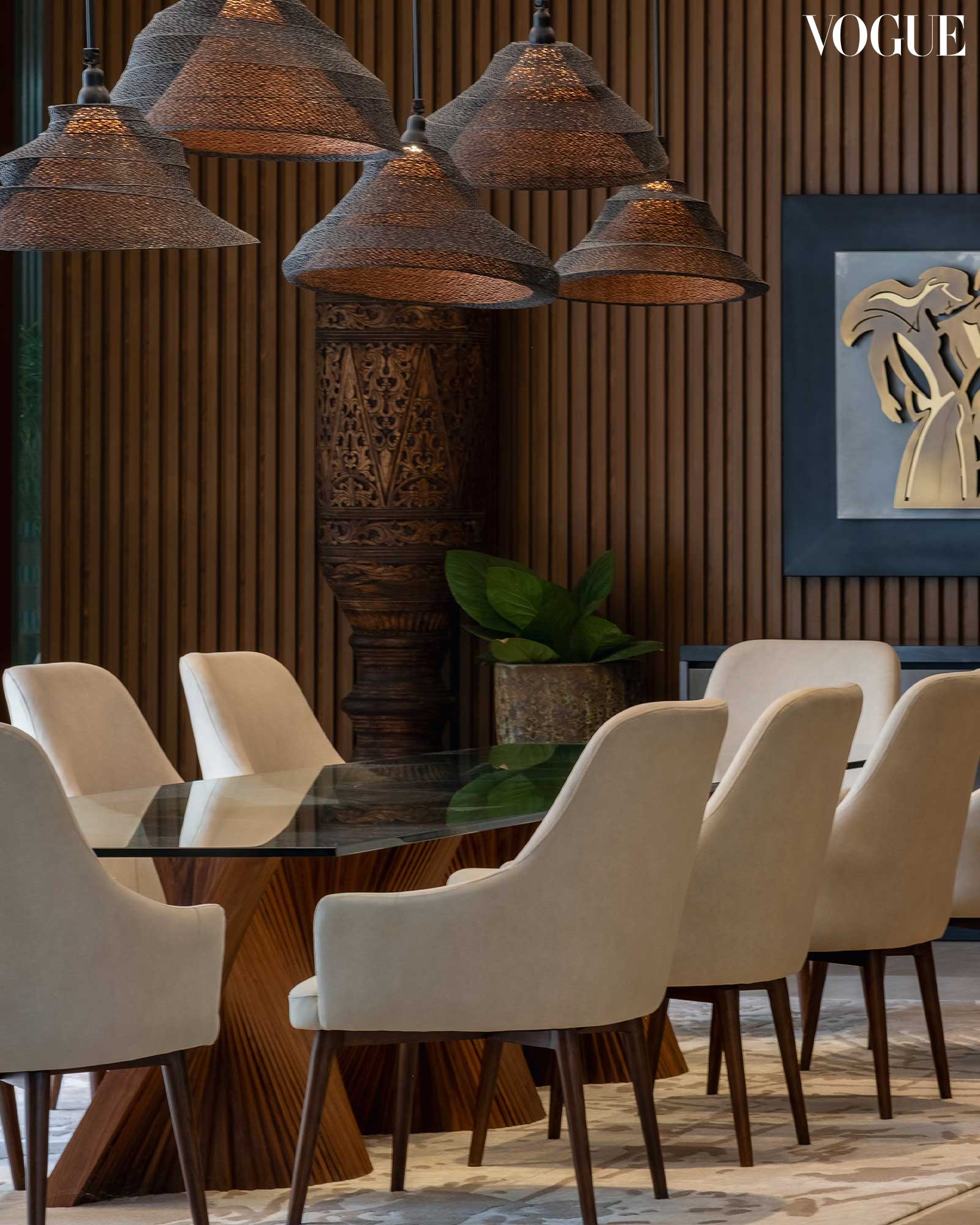
The upper level functions as the family’s private area, where the couple’s four children hang out, study, or build Lego. Pineda comments that the children are very lucky to be growing up in such an environment, not just for its comfortable and wide spaces, but for their exposure to the best of Filipino design. “That will set the standard for them as they grow up,” he says.
If there is a downside to living in such elevated domestic spaces, it’s that Pineda’s clients have grown accustomed to a standard of living that can be hard to match elsewhere. “This is what constantly happens to our projects,” Pineda chuckles. “Many of our clients tell us that it’s a problem when they travel and check into hotels, because they don’t live up to the comfort and sophistication of their own homes.”

The couple’s vision goes beyond mere luxury; with Pineda, they have crafted a holistic living space that seamlessly blends luxury, functionality, and cultural identity. The pandemic has taught us that our homes can be a multifaceted haven, a place for work, relaxation, and entertainment; a place where family members have the space to nurture their individual interests, but at the end of the day all gather together at a long table over conversation and laughter and all the other intangible things that make a house, no matter it’s breadth, a home.
